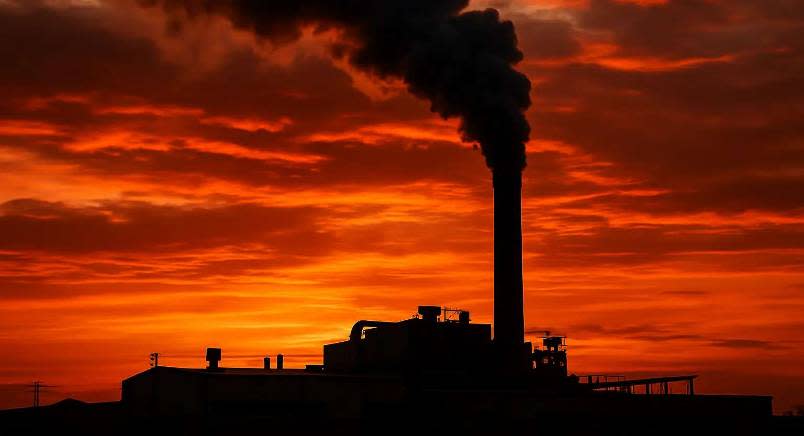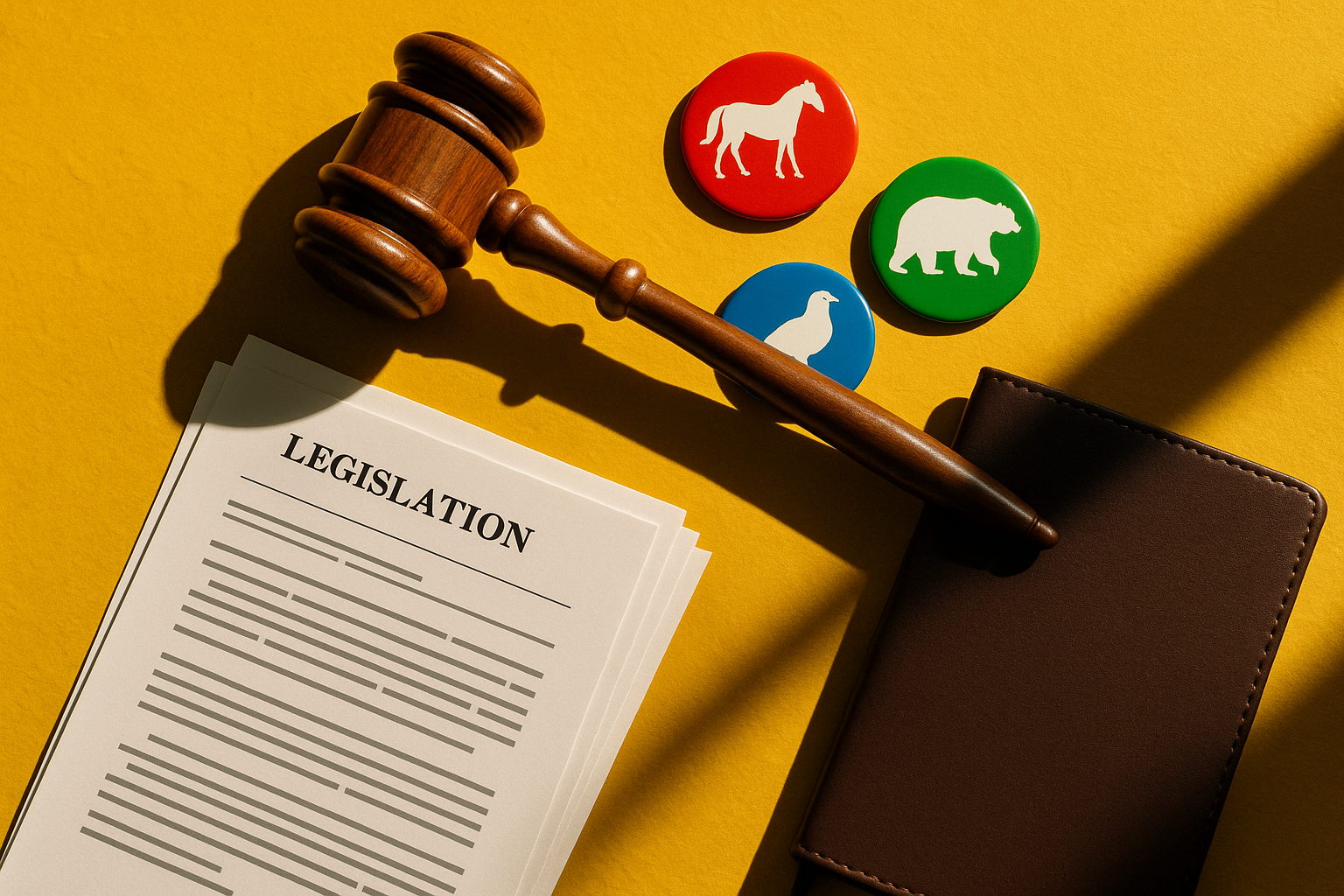




Huge factory farms are mistreating animals, polluting the air and water, and making us all sick.

In order to maintain a massive output that keeps the meat, dairy, and egg industries churning, food companies rely on massive confinement facilities known as CAFOs, or concentrated animal feeding operations. Hundreds of thousands of these facilities exist throughout the United States. Together they imprison millions of animals and produce more than a million tons of waste every year. Better known as “factory farms,” CAFOs are the site of countless acts of animal cruelty, a breeding ground for viruses and drug-resistant bacteria, and are one of the biggest sources of air and water pollution. There’s really no good that comes from CAFOs.
What is a concentrated animal feeding operation?
A CAFO is an agricultural facility that keeps a large number of animals confined to a small, densely populated space. Unlike free-range farms where cows graze through a pasture, or chickens forage for food in fields, CAFOs bring feed to their animals who are forced to remain stationary.
On CAFOs, animals, feed, manure, urine, dead animals, and production operations all congregate on one small land area.
The rise of concentrated animal feeding operations (CAFOs) represents one of the most significant shifts in modern agriculture. These industrial facilities have fundamentally changed how animals are raised for food in the United States, moving from traditional farming methods to large-scale, intensive operations.
What defines a CAFO? Is it different from an AFO?
The Environmental Protection Agency (EPA) defines animal feeding operations (AFOs) as livestock operations where the animals remain confined for at least 45 days per year and where no grass, crops, nor other vegetation are present during the normal growing season on any portion of the facility.
Basically, CAFOs are scaled up versions of AFOs. Factors like the number of animals housed on the facility and the way it disposes of waste distinguish CAFOs from other animal feeding operations. A feeding operation that contains at least 1,000 pounds of “live weight” is a CAFO. Additionally, if an AFO discharges manure or wastewater into a ditch, stream or other waterway, it is defined as a CAFO, regardless of its size.
Are there different kinds of CAFOs?
Yes, CAFOs come in various sizes—housing anywhere from hundreds to thousands of animals—and can be home to a range of different species. The most common animals found on CAFOs are chickens, hogs, and cows.
Poultry CAFO
Chicken and other poultry CAFOs typically use “dry-waste systems.” In this kind of indoor facility, animal waste falls from the birds’ cages onto the floor. Then the droppings are scraped out of the building or removed via conveyor belt.
Cows and hogs
In indoor dairy, beef, and hog farming operations, as manure and other contaminants collect on the floor, clean water is used to flush the waste into a storage area or some kind of drainage infrastructure.
Animal feedlots
This type of CAFO which keeps animals penned outside. In this outdoor setting, animal waste collects on the ground and washes off into nearby ditches and streams.
Why are CAFOs bad?
Concentrating thousands of animals in one small facility helps the meat industry cut corners and lower their bottom line. However, the animals, surrounding environment, and neighboring communities must pay the price.
Environmental impact of CAFOs

The environmental challenges posed by CAFOs extend beyond local concerns to broader climate implications. These facilities contribute to climate change through multiple pathways: direct emissions from animals, decomposition of waste, and the energy required to operate industrial-scale facilities.
Air pollution
According to a CDC report, CAFOs produce several types of harmful air emissions. Manure decomposition releases gases like hydrogen sulfide, ammonia, and methane in to the atmosphere, and the movement of animals further pollutes the atmosphere with particulate matter. All of these pollutants pose varying risks to human health and the environment, according to the CDC. Ammonia and [hydrogen sulfide](https://www.cdc.gov/niosh/topics/hydrogensulfide/default.html#:~:text=Hydrogen%20sulfide%20(H,work%20being%20done. "Hydrogen Sulfide") can cause chemical burns to the respiratory tract and eliminate people's ability to smell. In addition to immediate human health impacts that come from inhalation, air pollution from CAFOs also contibutes to the greenhouse effect and accelerates the climate crisis—which some doctors believe is the "greatest threat to public health" of all. Methane is a super powerful greenhouse gas, 80 times more potent at warming the atmosphere than carbon dioxide. The EPA identifies CAFOs as one of the leading sources of methane emissions in the US.
Water pollution
The National Water Quality Assessment shows that agricultural runoff from CAFOs and other farming-drelated operations is the leading cause of poorer water quality in rivers and streams, the third leading source for lakes, and the second for wetlands. Waste from a CAFOs can infect nearby groundwater, a major source of drinking water for people throughout the country. It can also create buildups of nitrates and ammonia in surface water, which kills off a lake or river’s aquatic life.
Why are CAFOs bad for animals?

Overcrowding
It’s much easier for disease to spread among animals trapped inside a CAFO, simply because there are so many of them and they are confined in such tight, squalid quarters. Not only can viruses, bacteria, parasites, and other pathogens spread rapidly throughout an animal population, they can get transmitted to a human, which can lead to a widespread outbreak in a nearby community before public health officials are able to determine the source.
Confinement
Even if an animal avoids getting infected with a painful illness, there’s still no escape from the inhumane boredom and anxiety of being locked up to the point that she can barely move or engage in her natural behaviors. In some cases, like on pig farms where pregnant sows are kept in gestation crates, animals are confined so tightly that they can’t even turn around.
Cruelty
Chickens, pigs, cows, and other animals raised for human consumption are sentient creatures who can feel pain and experience strong emotions, yet factory farms treat them like inanimate objects. On poultry CAFOs, chickens are debeaked, deprived of light, and slaughtered while still conscious. On overcrowded dairy farms, cows are subjected to the psychological torture. An endless loop of forced impregnation, only to have their calves ripped away from them at birth. And, on hog farms, pigs face horror from the moment they’re born—when they endure painful mutilations like castration and tail docking—to the moment they’re slaughtered, often while fully awake and conscious.
How do CAFOs impact human health?

The connection between public health and CAFOs has become increasingly clear over time. Communities near these facilities face a range of potential health challenges, from air quality issues to concerns about water contamination. The concentration of animals and waste in small areas creates conditions that can affect both workers and nearby residents.
Neighboring communities
Several studies have investigated the links between living near CAFOs and adverse health effects. One survey compared a rural community that neighbored a hog CAFO to others without any major agricultural operations nearby. The residents who lived near the hog facility reported significantly higher levels of headaches, runny noses, sore throats, excessive coughing, fatigue, diarrhea, and burning eyes. These people also were much less likely to open their windows or go outdoors on pleasant days. Mental health issues like tension, depression, and anger were notably higher among the CAFOs’ neighbors as well. Another study found that communities near CAFOs had higher rates of infant mortality.
Pathogen spread
Pathogens are parasites, bacteria, or viruses that can cause disease or infection in animals or humans. Over 150 of them can be found in animal manure, putting people who live near CAFOs at an increased risk of illness. For example, if waste from a large industrial farm leaks into a community’s source of drinking water, residents are at increased risk of salmonella, E. Coli, cryptosporidiosis, and giardia infection. These kinds of infection can cause nausea, vomiting, fever, diarrhea and muscle pain. Among the young, elderly, and immunocompromised, infections can be much more severe, sometimes resulting in death.
The COVID-19 pandemic highlighted additional public health risks associated with CAFOs, as facilities became hotspots for viral transmission among workers, according to CDC reporting.
Antibiotic resistance
Rather than fixing the extreme overcrowding at their facilities and all the health problems that come with it, industrial farms have opted to instead pump their animals full of antibiotics. Antibiotics are also used to unnaturally expedite animal growth. About 80 percent of antibiotics are used on mostly healthy farm animals, not humans.
According to Johns Hopkins’ Center For a Livable Future, “these practices are eroding the effectiveness of life-saving medicines and fueling a public health crisis.” The more these antibiotics are overused on animals, the more immune certain bacteria become, and the more likely humans are to get infected by these drug-resistant bacteria. People who live near CAFOs are at an increased risk of this sort of hard-to-treat infection, according to Johns Hopkins.
Community impact
The presence of a CAFO can dramatically alter the fabric of a rural community. Beyond environmental and health considerations, these facilities can change the character of agricultural regions, affecting everything from local road traffic to community relationships. Small farmers and residents often find themselves adapting to significant changes in their traditional way of life.
Two recent documentaries have highlighted the growing resistance to industrial animal agriculture in America’s heartland. Common Enemy chronicles how Oklahoma communities—including former slaughterhouse workers, tribal members, and veterinarians—have united to challenge the expansion of factory farming in their state. Battleground turns attention to Wisconsin, where residents are fighting to protect their water and land from the environmental and economic impacts of concentrated animal feeding operations (CAFOs). These documentaries illustrate how CAFOs affect diverse stakeholders across rural America, and how communities are organizing to advocate for change.
We can do better
Agricultural industry lobbyists are a deeply powerful force—they've worked for years to keep Americans in the dark about what happens at these massive feeding operations. They’ve also been quite successful at keeping government oversight at a minimum, allowing CAFOs to pollute the air and water relatively freely, hurt public health, and mistreat innocent animals.
There are, however, ways ensure that you don’t support CAFOs, and even ways to actively oppose them. If you live an area affected by factory farming, getting involved in local politics and contacting your local representative to demand better protection for farm animals and public health are great ways to stand up to “big ag” at a grassroots level.
Another great step is to stop buying meat, eggs, and dairy products from this dangerous industry. By switching to a plant-based diet, not only will you be supporting animal welfare and the environment, you’ll be doing your own well-being a great favor.






